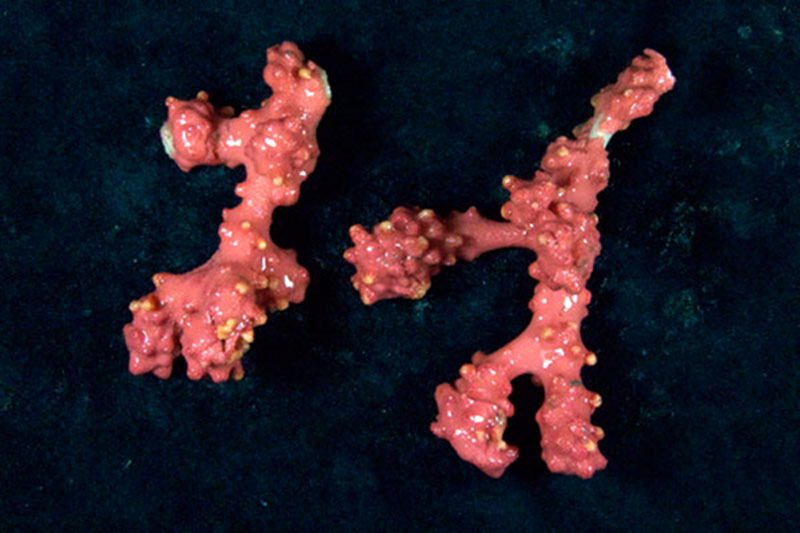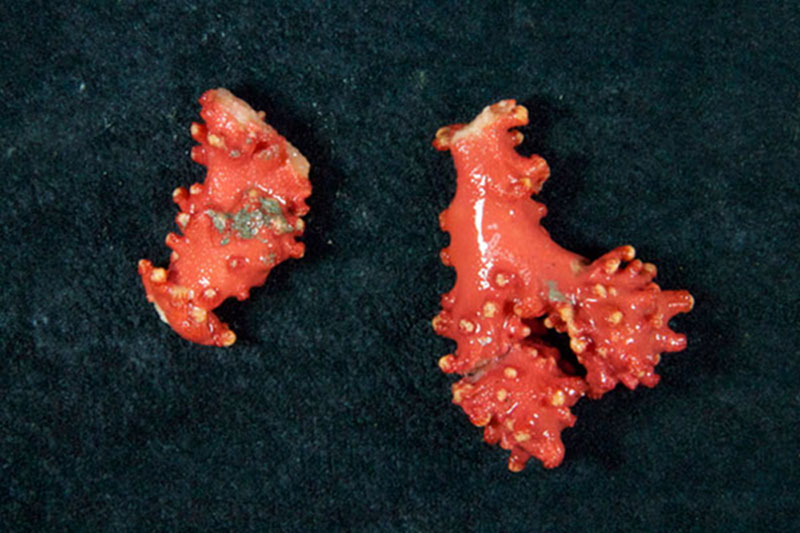
By Katharine Coykendall - USGS
August 21, 2012
Four different samples of Paragorgiasp. from Baltimore Canyon.

Samples of coral from different locations can be used to analyze genetic relatedness and origin. Image courtesy of E. Hannerman, Deepwater Canyons 2012 Expedition, NOAA-OER/BOEM. Download image (jpg, 86 KB).

Samples of coral from different locations can be used to analyze genetic relatedness and origin. Image courtesy of E. Hannerman, Deepwater Canyons 2012 Expedition, NOAA-OER/BOEM. Download image (jpg, 81 KB).

Samples of coral from different locations can be used to analyze genetic relatedness and origin. Image courtesy of E. Hannerman, Deepwater Canyons 2012 Expedition, NOAA-OER/BOEM. Download image (jpg, 99 KB).

Samples of coral from different locations can be used to analyze genetic relatedness and origin. Image courtesy of E. Hannerman, Deepwater Canyons 2012 Expedition, NOAA-OER/BOEM. Download image (jpg, 86 KB).
Studying genetic connectivity in deep sea communities is important from a management and conservation perspective. Knowing how populations maintain themselves in a harsh, nutrient-limited environment is essential when considering management of mineral and natural resources and conserving habitats of special concern.
Measuring genetic diversity in threatened populations can elucidate a population’s potential for adaptation to variable environments on an evolutionary time scale. Genetic diversity can also be an indirect measure of migration between other populations nearby. Studying migration in deep sea organisms is a difficult business. In many deep sea invertebrates, such as corals, the only part of their life cycle that is mobile is the larval stage. Direct observing and measuring of migration in this remote environment and of elusive larval stages is difficult if not impossible. However, multi-locus genotypes can act like a tag that assigns individuals to a source population and identifies immigrants.
With adequate sample sizes and numbers of genetic markers assayed, we can determine if invertebrates in different submarine canyons or within the same canyons, but at different depths represent isolated populations. If so, that is evidence that populations recruit the next generation locally and extirpation is not likely to lead to rebirth of a population. Alternatively, strong bottom currents could lead to a high amount of genetic connectedness or homogeneity between populations otherwise separated by distance or topography. In those cases, populations recruit the next generation from farther away and would be more easily reseeded if harmed. Another possibility is the identification of one, major source population responsible for the majority of reseeding and sustaining of other minor populations. Under this scenario, it would be vital to protect the source population from human threats to ensure the perpetuity of all other populations.